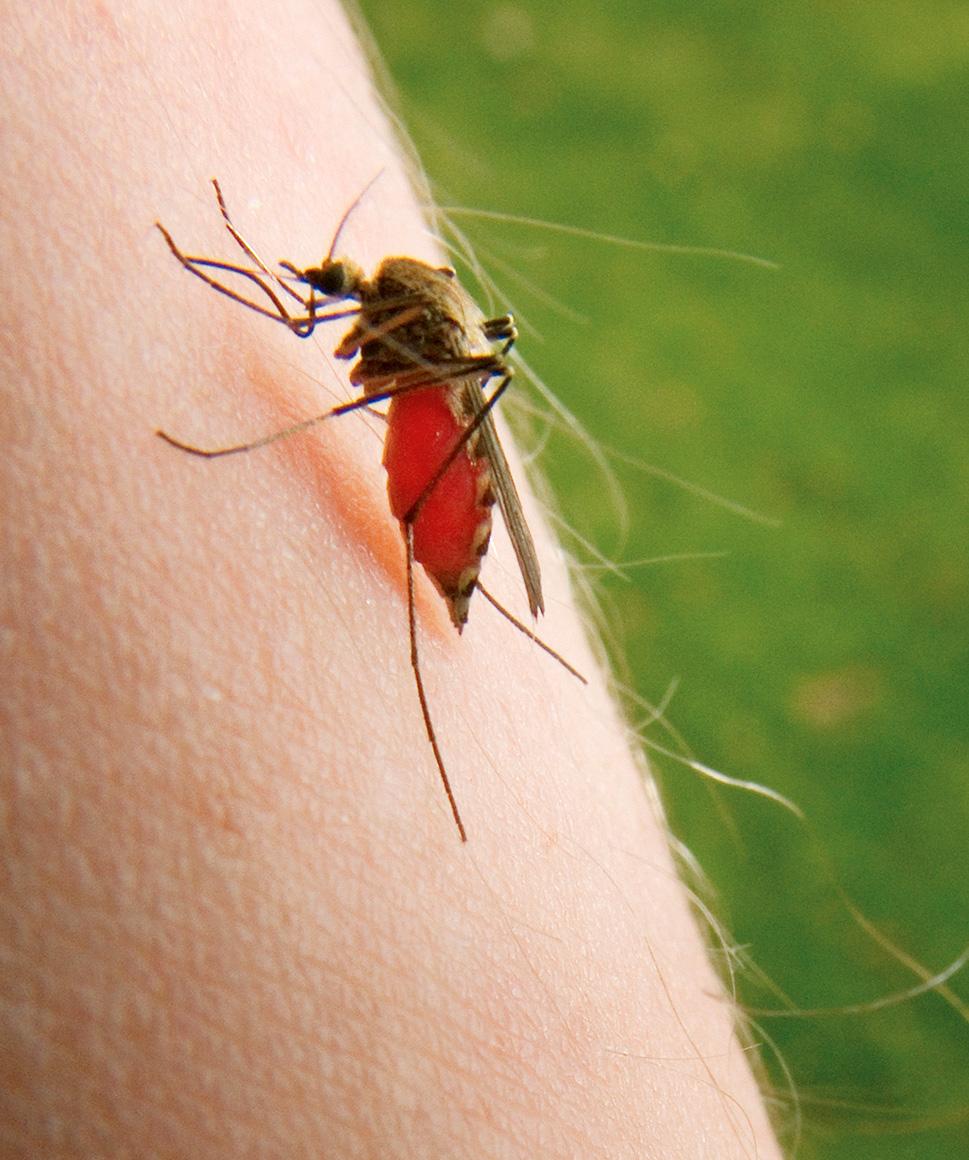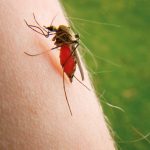Here’s how to minimize your risk of contracting this disease while on safari.
Because malaria is rare in the United States, we don’t hear a lot about it, save for periodic media sound bites that are largely negative and often unsettling. The news is usually bad news. For instance: More than 350 million people contract malaria each year, and about one million die from it. Meanwhile, drug-resistant strains of malarial parasites are said to be on the increase, making the disease harder to prevent and more difficult to cure. Every year, according to the CDC (Centers for Disease Control and Prevention), approximately 1,500 American travelers are diagnosed with malaria after their return to the States. And, the CDC claims, “Travelers to sub-Saharan Africa have the greatest risk of both getting malaria and dying from their infection.”
Yikes. That remark made me wonder: What, in fact, is the actual malaria risk for someone visiting Africa’s hunting countries? And what are the best ways to safeguard against the disease? Also, if one does contract malaria, what’s the likely prognosis? Is a full cure likely? In sum, how concerned or worried should we be about the risks and dangers of malaria?
To get the best possible answers to these questions I wanted to talk with someone who knows the subject in practice as well as in theory. Since few American doctors ever see, much less treat, an actual case of malaria, I opted to go to Africa–if only by phone this time–to interview a working authority on the subject. Dr. Phil Seidenberg has lived and practiced medicine in Zambia for five years. For the last 3 1/2 years he has been African Regional Medical Director for Global Rescue (see below) in the capital city of Lusaka, where he has encountered and treated many cases of malaria.
Unsurprisingly, Seidenberg confirms that malaria is endemic in most of the hunting countries, and agrees that the disease should be taken seriously by everyone visiting Africa. That’s the simple part. The specifics get a bit more complicated.
As most of us know, malaria is not a uniform threat even in Africa. The risk level varies region to region, and often is variable within a country or province.
“For instance, West Africa is generally high risk,” says Seidenberg, “as are parts of Ethiopia; while Botswana is low risk. I’ve never seen a malaria case from the border area [with Zambia and Zimbabwe] of Botswana. Another anomaly is South Africa; they don’t have much malaria.”
The CDC rates malaria risk in South Africa as “low,” but points out that the disease is present in Mpumalanga Province, Limpopo (Northern) Province, and northeastern KwaZulu-Natal as far south as the Tugela River. It also occurs in Kruger National Park. According to the CDC, all areas of Zambia, Zimbabwe, Tanzania, and Namibia have malaria present, at a “moderate” risk level for travelers. The CDC rates the risk in Botswana as “very low.” As Seidenberg points out, the threat of malaria also changes with the season, worsening during rainy periods, when abundant standing water helps mosquitoes breed and hatch prolifically.
More mosquitoes means more risk for the disease. Malaria is caused by a single-celled protozoan parasite of the Plasmodium genus. The parasite is carried and transmitted by infected female Anopheles mosquitoes. While probing for a “blood meal,” these mosquitoes inject malarial sporozoites into the human bloodstream. The parasites then incubate within the human host, reproducing at a rapid, exponential rate until they overwhelm the immune system, causing the overt symptoms of malaria: fever, chills, sweats, headache, and muscle pain; and sometimes nausea, vomiting, abdominal pain, backache, and dark urine. Untreated, the escalating disease can be fatal.
The best first step to avoiding this misery is to choose the right preventative (“prophylactic”) anti-malarial drug. According to Seidenberg, there are three basic choices for the hunting countries of Africa. Each has its own particular advantages and drawbacks.
Mefloquine (Lariam) has been around for quite a while and is preferred by some because it is taken on a weekly (rather than daily) basis, and is less expensive than some other options—an advantage on long-duration trips. Another plus is that Lariam can be safely used by pregnant women. On the downside, Lariam needs to be started at least two to three weeks prior to travel, and must be continued for three to four weeks post-trip. Worse, studies have shown that Lariam has more side effects than any other anti-malarial drug. These include gastric problems and, especially, dysphoria (the opposite of euphoria) including disturbing dreams, feelings of uneasiness, and psychological distress. However, many people use Lariam with no ill results. Those new to the drug should begin taking it at least a month before travel. Then if side effects occur, there’s still time to switch to a different medication before departure.
A second prophylactic option is doxycycline, which Seidenberg says is gaining favor in the region. It is a good choice for last-minute travelers, because it can be started one to two days before arrival in a malarial area. Another plus is the price; it tends to be the least expensive anti-malarial. Doxycycline can also prevent several other infectious diseases that might be encountered, especially when hiking and camping, or when wading or swimming in fresh water. Negatives for doxy include the possibility of upset stomach or diarrhea, and most commonly, hypersensitivity to sunlight, leading to sunburn. The drug must be taken daily, and cannot be used by pregnant women or children under eight years old.
The third, and arguably the best drug of choice, is Malarone. This is actually a two-drug combo, consisting of Atovaquone and Proguanil. It is taken daily, and needs to be started only one to two days before travel. The drug is very well tolerated, and side effects are minimal and uncommon. Also and importantly, the two-drug punch greatly reduces the chance of contracting a resistant malarial strain. The only general drawback, aside from the fact that this medication cannot be used by pregnant women, could be the price. Malarone is more expensive than the other options, and since it is taken daily, cost could be a factor for some, especially on longer trips.
No matter which preventative you choose, it’s vital to understand that none of these drugs are 100 percent effective.
“If you’re bitten by an infected mosquito,” Seidenberg warns, “the drugs won’t keep the parasites from being introduced to your body. What the drugs can do is prevent the parasites from reproducing to the level where an acute infection develops. The prophylactic medicine keeps the parasite count low enough so that the body’s immune system can do its job.”
This brings us to the second important phase of malaria prevention: avoiding bites from infected mosquitoes.
“The two highest points of malaria transmission by the Anopheles mosquito occur around dusk and again in early morning, around sunrise,” says Seidenberg. “So you want to avoid bites at those times. The best way is to wear long clothing that reduces skin exposure, and to use DEET compounds to keep mosquitoes away. It’s also important to sleep under mosquito netting. The more bites you get during the night, the higher your chances of acquiring an infection. Permethrin-treated nets are most effective.”
Since DEET repellents can be hard to find in Africa, it’s best to bring your own copious supply. You might also want to pack your own pre-treated netting, especially if you plan to travel in the region before or after a safari. For additional protection, use permethrin on your hat and clothing (also on your boots and socks, which helps ward off ticks as well.)
But what if, in spite of all these precautions, you begin to have malarial symptoms? Since fever, chills, and headache can be caused by other diseases and viruses, you must first determine whether or not you actually have malaria. This is easy to do nowadays, thanks to an invention of the last decade called the Rapid Diagnostic Test (RDT), a take-along test card that’s simple to use. Simply prick a finger to spill a few drops of blood on the card’s sample pad; then wait fifteen minutes. If malarial parasites are present, colored bands in the test-card window will indicate the precise species. All travelers to Africa, Seidenberg believes, should carry a few RDTs.
“Results are available within fifteen minutes, there’s no lab required, and the sensitivity for detection is very, very high.”
RDTs have recently become available in the USA, but if you can’t find them near home, they are generally available without prescription in most African capital cities.
In the field, if your test results are positive for malaria, you can then proceed to the nearest treatment clinic. Or, if the proper curative drugs are available in camp, you can begin self-treatment (best if prescribed via mobile phone by a physician).
How worried should you be if you do have malaria?
“Malaria cases are usually divided into simple and complicated,” Seidenberg explains. “Most of the cases we see are simple, meaning they don’t involve the central nervous system, they aren’t severe enough to involve the kidneys or present other complex symptoms. These simple cases can be treated with oral medication in the setting of travel, as opposed to evacuation. With all malaria, the earlier the treatment starts, the better the outcome. But most cases can be cured without problems or complications.”
All in all, how concerned or worried should hunters be about malaria danger in Africa?
“The incidence of malaria in this country and this region has dropped considerably over the last five years,” says Seidenberg. “The risk for travelers is a lot less than it was five years ago. Hunters have generally done a good job readying themselves prophylactically, and they typically are in areas with smaller human populations. In some ways that decreases malaria risk, because human hosts are needed for transmission.”
In sum, then, the news is actually pretty good.
“Malaria is always going to be a concern,” Seidenberg concludes, “but with the proper drug prophylaxis and mosquito-bite avoidance, I think the risk is a lot lower now than it’s ever been. Hunters need to be aware of malaria, but they don’t need to be overly concerned or worried about it if they’re following the right precautions.”












